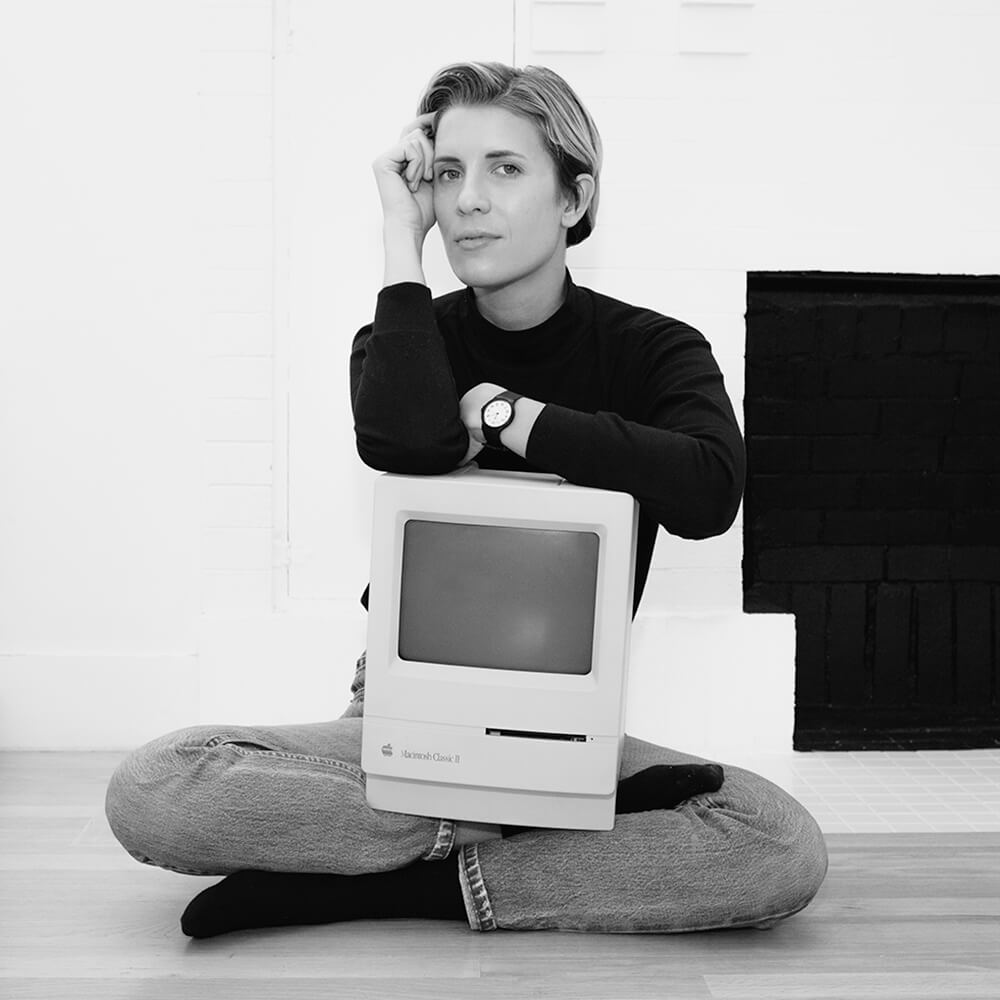← Explore
“What we think is a consequence of the tools we use to think. Computers are tools for thinking, as are scissors and paste pots. This dossier, we hope, will be a tool for thinking too.”
Claire L. Evans is a writer and musician based in Los Angeles. She is the singer and coauthor of the Grammy-nominated pop group YACHT, and the founding editor of Terraform, VICE‘s science-fiction vertical. She is also the former futures editor of Motherboard, and a contributor to VICE, Rhizome, The Guardian, and many other publications. Her 2018 book, Broad Band, tells the history of the female visionaries at the vanguard of technology and innovation.
When the visionary hypertext designer Ted Nelson was a young man, he took a job at the New York Times. One of his primary responsibilities at the paper was to refill the paste pots journalists used to cut and paste their stories together. Before the invention of the word processor, working writers often physically cut text into paragraph-sized chunks and rearranged them on tables to tease out interesting associations before ultimately deciding on a structure for their work.
“The words cut and paste, for writers, always meant taking your material, cutting it up, and putting it all around in front of you, in parallel, so you could see it side-by-side,” Nelson explained in a late ‘90s interview. This was the cut-up of the Dada poets and William S. Burroughs—an aleatory, sometimes radical juxtaposition of ideas—not the cut and paste of the computer, which Nelson condemns as an abomination.
When we ‘cut’ text in a word processor, it disappears to a clipboard, which holds it until it is ‘pasted’ elsewhere. Since the clipboard only holds one thing at a time, and remains hidden from view, a writer can only rearrange ideas in an extremely limited sense. Cut and paste, Nelson surmised, are “two holy words about human creativity,” and engineers, fundamentally misunderstanding them, desecrated the act of writing, creating an impoverished tool that reduces our ability to puzzle together complex ideas.
What we think is a consequence of the tools we use to think. Computers are tools for thinking, as are scissors and paste pots. This dossier, we hope, will be a tool for thinking too: a collage of insights, references, and thoughts that will accumulate as we simultaneously process and record our impressions of this year’s MUTEK Forum (Aug 24–Sep 2) in real time. Alongside the daily dossier, we’ll be broadcasting our findings live in an experimental variety half-hour mapping what we’ve learned from each day of the festival. To learn more about how others ‘record’ information, we’ll be joined by daily guests—artists, designers, musicians, and authors—who will share their tools for thinking and show us how they conduct research within their practice.
We’re not reporters, exactly; we’re recorders. But like journalists of another century, we will be speaking Nelson’s holy words, cutting, pasting, arranging and re-arranging, observing what connections we can make together, until something new begins to emerge from the noise. HOLO has invited me to refill the paste pots. Let’s see how the story comes together.
“We’re not reporters, exactly; we’re recorders. But like journalists of another century, we will be cutting, pasting, arranging and re-arranging, until something new emerges from the noise.”
Based in Montréal and active through many international satellites, MUTEK is one of the world’s most storied electronic music festivals, having nurtured eclectic and experimental acts since 2000. Beyond their indefatigable promotion of new sounds and audiovisual performance, MUTEK’s flagship edition has always made space for critical conversations about all facets of digital art and culture. This year, we look forward to hearing from keynote speaker Benjamin Bratton, and artists Memo Akten, Sarah Friend, Ying Gao, Sabrina Ratté, and many others.
